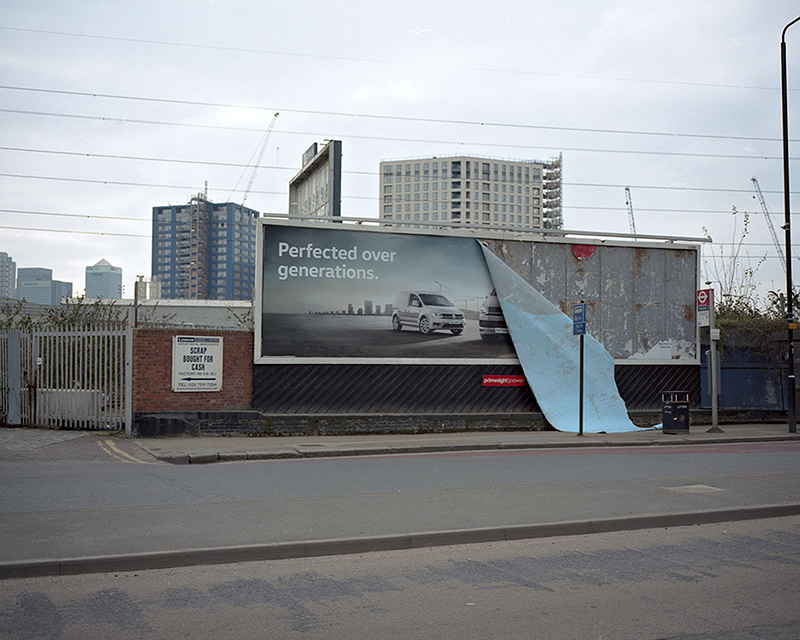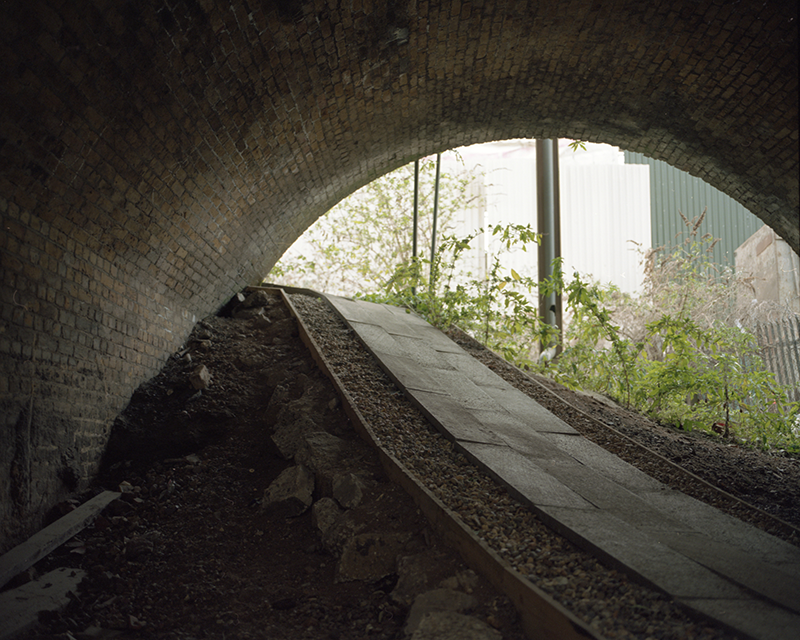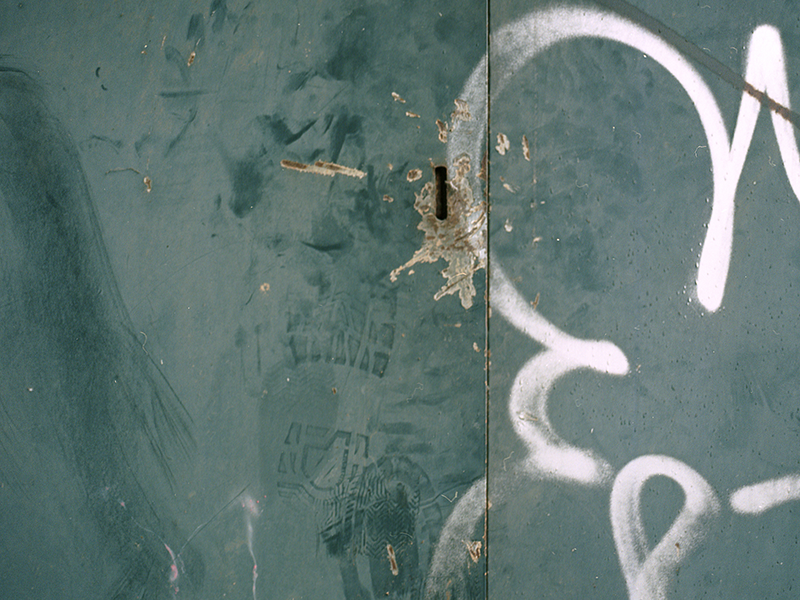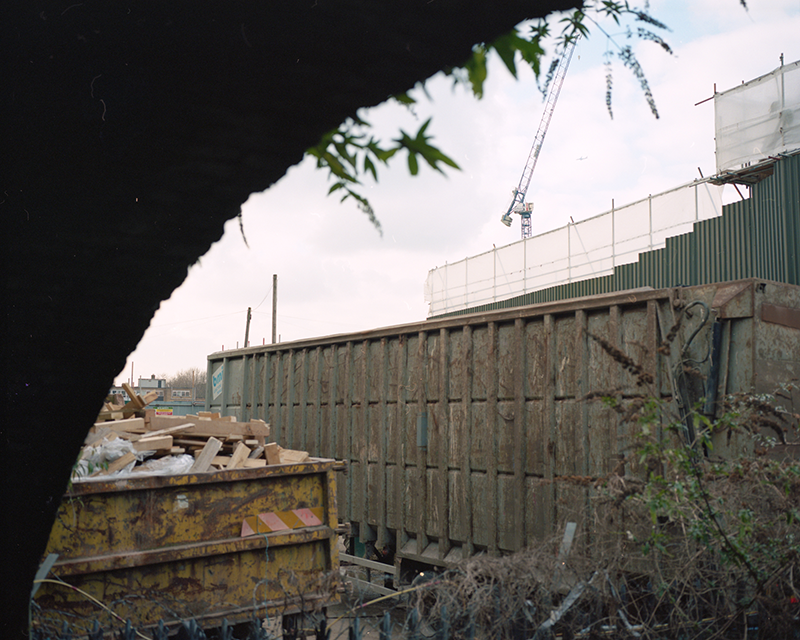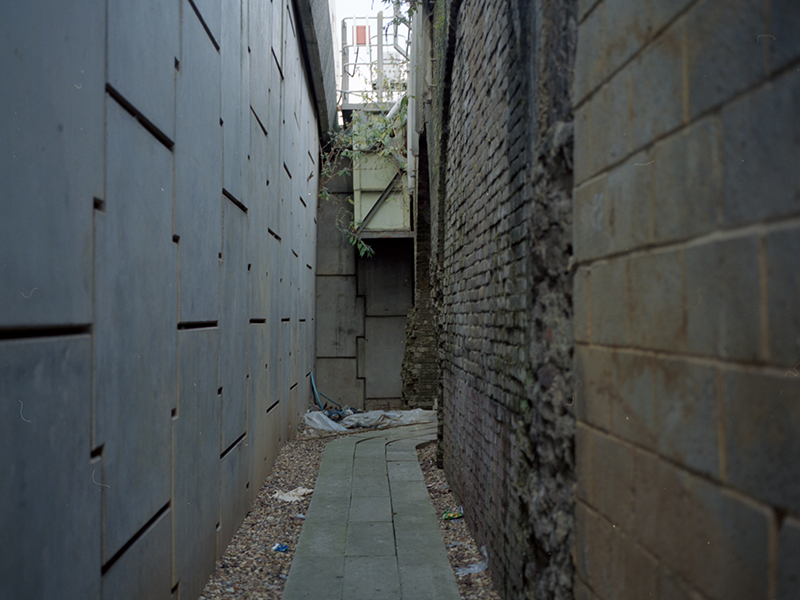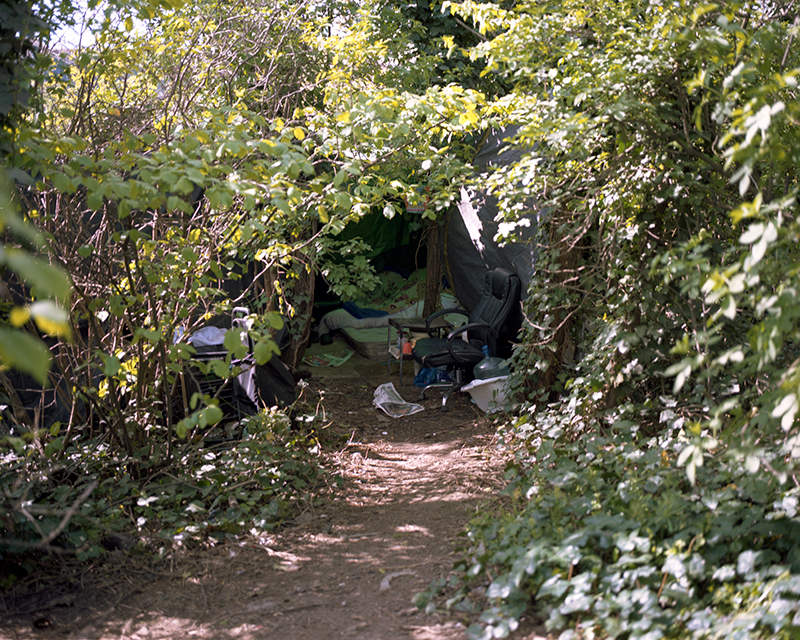london’s hidden encampments and outsider designers
This essay explores the hidden encampments made by people experiencing homelessness in London. It looks at how people who have been excluded from the system claim hidden spaces in the city. These places are often the negative space of new developments and infrastructure, designed digitally, carbon copies pasted on blank slates. Here they build encampments from what material is available, often the useful detritus of a wasteful city. Though utilitarian in their purpose (shelter, warmth, privacy), these structures inevitably take on the character of their creator, embellished and expanded for as long as they can manage to go unnoticed. In this sense their creators are the outsider designers of spaces which may be seen as anomalies and aberrations, but are so frequent that they can only be considered an integral part of an unequal urban fabric.
There isn’t much out there. Trains and tracks, cars, roads, billboards and building sites. It was one of those days when the sky is so grey that it feels like you’re being smothered under its folds. Awkward spires of glass sprung from the concrete in a cocoon of scaffold and cladding, seeing their new home for the first time. They were rigid in the cold air, frozen stiff, as though they missed the eternal sunshine of the computer simulation from which they came. A place where wispy figures frolicked between them, the afternoon sun caressing their mirrored skin. Yet there was no sun, and no people, well a few, but they hurried away, hoods up, eyes down. No one was coming here, only passing through.
When the barren overpass I was crossing became overwhelming, it’s noise, its smells, its indifference, I dipped into a set of stairs leading below. I breathed a quick sigh of relief, the motorway seemed so wide, so long, it warped and grew as my legs seized in the cold. My sigh was cut short however by a sudden whiff of urine. Those bushes were everywhere, you know the ones, the purple flowers that grow out of every empty plot, making use of every crack the landscape left undefined. Then, a gap in the bushes and a hole in a fence led me somewhere new.
I stood before the looming concrete support of the overpass, a ten foot pile of detritus behind me. In the concrete was a large metal door, a footprint on its handle, a large boot, maybe a size twelve, a strange omen. Yet, I have never been particularly superstitious so I passed through this next broken barrier. As the wind slammed the door shut behind me, a sudden silence came over the hollow of the overpass, the car hum ceased, replaced by the occasional rhythmic thud of lorries driving over the concrete slabs above. The wind now whistled calmly between the bricks. Workman’s tools lay about, a wheelbarrow, a spade, some bricks, yet they were all one colour, fluffy beige. The rattle of trucks above had stripped the ceiling of dust; it had resettled itself across the ground. I turned, peering deeper into the shadowy tomb, as my eyes adjusted, I became aware of the skeletal remains of so many pigeons that surrounded me in varying states of decay, perhaps they’d got stuck.
A hessian bed lay in the corner, lumpy from its filling, or perhaps the recent imprint of a body. Names were sprayed large across the walls, like a shout that could never be heard. We all need to speak, to paint, even when we know no one will hear it. An outdated newspaper lay beside a can and a pigeon bone, the birds watched cautiously from the girders above. They crowded round a small hole that separated tomb from street, leading a ribbon of light between the pillars; punctuated by fluttering shadows and the sound of wings.
I went back; back through the door, under the fence, through the bushes, back to the sorrowful streets. Rubbish was dumped by the roadside. The accumulation of the city had flowed to this point, piled up, and was busy being forgotten. Was I surprised by this refuge among the refuse? Not really. I’ve been wandering in the under-loved parts of this city for years, through the abandoned wastelands of empty lots, industrial fixtures and forgotten cul-de-sacs. These camps, refuges and hidden homes are far from an anomaly in the urban environment, they are a permanent yet largely invisible fixture. These spaces are designed and built by those squeezed out of the system, using what is available to provide the most basic of functions. And though they offer little safety, they can provide a dry place to sleep and keep warm, a place to cook, a place to wash clothes, a place to be private.
Not only do they represent a kind of outsider design themselves, but they take place in the spaces of surplus design, the negative space left by structures built with the square kilometer in mind. Spaces processed and rendered, a world increasingly automated into existence. Carbon copies pasted on blank slates. Like a dream, I remember a promotional video I once saw for a new development. I am floating high above an empty green island on a bend in the River Lea, in London’s lost docklands, now the site of the ‘Royal Docks Enterprise Zone’. It is sunset and the former millennium dome gleams in golden light. Suddenly blue and gold swarms of cubes fly in from all angles, converging on the barren ground. They form together, building their way up, the divisions between each cube blending into a smooth surface rising up in each colour.
Once each colourful tower is complete and smooth, they begin to reverse, breaking apart and floating away. Beneath them, like a butterfly coming from within a chrysalis, come the new fully formed buildings of the development. Suddenly the development is finished, it teams with people and life. The construction process is an instant transformation. There is no noise, no dust, nor workmen. Nothing is displaced. It simply appears with the same smoothness with which the land that came before is erased.
Now it is some years later and the garish cluster exists, heavy and real. On one of its edges sits a thicket of old trees, capped off by fences. Perhaps it was outside the plan, couldn’t be bought or built on. And so, these spaces accumulate across the city. Further up the same river, there is a triangle of fences containing a fifty-meter square patch of trees. It is inaccessible and the result of a curve in the riverside path, perhaps it was the easiest route to flatten, perhaps giving the path a little more flair on the masterplan. Either way this selection of trees had found itself exiled. For the curious and the determined, the accustomed to climbing over or under fences, these places always have a way in, a way to break through the design, like dropping off the map in a video game. I dropped below the wall of the river, onto a bed of reeds and trash, thrown into the unknown by those within the design. Ahead of me was a rough path, or a hollowing out, lined by blackberry bushes. They were ripe. The path continued a moment before breaking out in a grove, becoming definite, lined by stones and broken bricks. It passes between wicker fences made from the trees around. A frame of branches holds drying clothes next to a small tent.
The owners of these camps are almost never present. Out in the city where life is. Forging a space in the places where there are no forgotten spaces, only forgotten people. I admire the intricacy and ingenuity of these structures. These people design spaces which will never be seen, and which if they are, will be removed. They take the materials in limbo, neither used nor sent to landfills, but left by the edges of slip roads and behind industrial estates. An old billboard for a Vauxhall Vectra becomes a rain cover. And yet while I study this space, I have the creeping sense of being an intruder, as though I have broken into someone’s home, their personal space. I want to meet the owner and ask them about how they made this place, and yet I cannot know if the camp has been left for a couple of hours or for a couple of months. These spaces are anonymous, but for the hand of their designer, each is unique. I leave as silently as I arrived, stepping back into the noisy world.
As of 2019, there were 280,000 homeless people in the UK, 163,000 in London and in Newham, where I have come across many camps, 15,000. Though a fraction of these people build camps, the camps are nonetheless an integral aspect of an unequal urban fabric, where for a few to accumulate so much, others must be dispossessed. These places stand as silent artefacts of people always moving on, sometimes by choice, more often by force. They are outsider designers working in forbidden spaces. Their work forms in the accidental surplus of a city being carved apart by insider designers at iMac’s, developers in boardrooms, nowadays bedrooms. Such details will not and cannot be rendered by the computer, a nameless designer in itself.
author
All about exploring and recording. Gösta has a love for the unseen, abandoned and everyday. The unsung who give neighbourhoods life. Combined with an (un)healthy suspicion of the development, the all-glass-scraper, the construction wall claiming luxury. An interdisciplinary artist based in London, the focus of their work is experience, participation and resilience.
first published for projektado magazine issue 1: anonymity in design / may 2021
